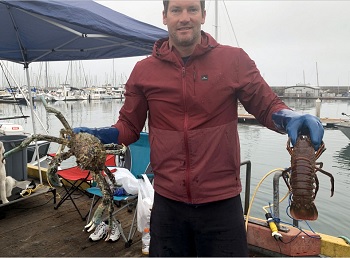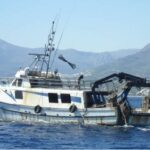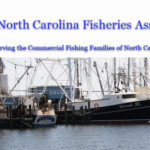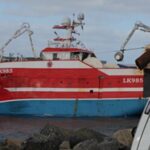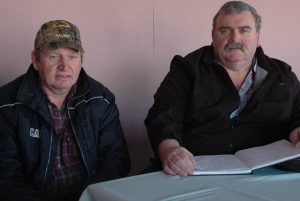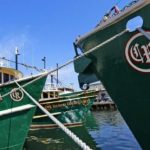Tag Archives: spiny lobster
FF&WC assessing spiny lobster’s role in protecting state’s coral reef
 The Florida Fish and Wildlife Commission acknowledged Friday they are researching if the eating habits of the spiny lobster can help preserve the state’s fragile coral reef ecosystem. “We are looking into whether spiny lobsters, especially the spotted spiny lobster, because it feeds directly on the reef, while the Caribbean spiny lobster, feeds mostly off of the reef in the surrounding seagrass and hardbottom habitats, can be used as a form of biocontrol of the invertebrates like fireworms and corallivorous snails that eat coral,” more, >>CLICK TO READ<< 13:22
The Florida Fish and Wildlife Commission acknowledged Friday they are researching if the eating habits of the spiny lobster can help preserve the state’s fragile coral reef ecosystem. “We are looking into whether spiny lobsters, especially the spotted spiny lobster, because it feeds directly on the reef, while the Caribbean spiny lobster, feeds mostly off of the reef in the surrounding seagrass and hardbottom habitats, can be used as a form of biocontrol of the invertebrates like fireworms and corallivorous snails that eat coral,” more, >>CLICK TO READ<< 13:22
Lobster Market Outlook, Industry Size, Growth Factors, Investment Opportunity 2024-2032
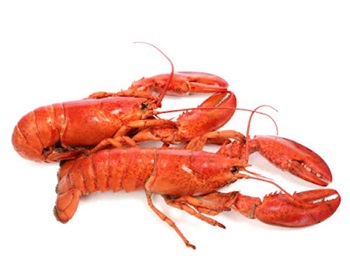 IMARC Group, a leading market research company, has recently released a report titled “Lobster Market Report by Species (American Lobster, Spiny Lobster, Rock Lobster, European Lobster), Weight (0.5 – 0.75 lbs, 0.76 – 3.0 lbs, Over 3 lbs), Product Type (Whole Lobster, Lobster Tail, Lobster Meat, Lobster Claw), Distribution Channel (Food Service, Retail), and Region 2024-2032.”The study provides a detailed analysis of the industry, including the global lobster market share, size, trends, and growth forecasts. The report also includes competitor and regional analysis and highlights the latest advancements in the market. How Big is the Lobster Market? more, >>click to read<< 10:36
IMARC Group, a leading market research company, has recently released a report titled “Lobster Market Report by Species (American Lobster, Spiny Lobster, Rock Lobster, European Lobster), Weight (0.5 – 0.75 lbs, 0.76 – 3.0 lbs, Over 3 lbs), Product Type (Whole Lobster, Lobster Tail, Lobster Meat, Lobster Claw), Distribution Channel (Food Service, Retail), and Region 2024-2032.”The study provides a detailed analysis of the industry, including the global lobster market share, size, trends, and growth forecasts. The report also includes competitor and regional analysis and highlights the latest advancements in the market. How Big is the Lobster Market? more, >>click to read<< 10:36
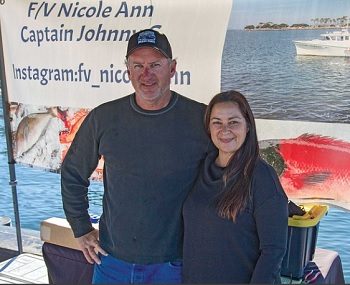
Spiny lobster comes back to San Diego
The rumored price prior to the season opening was $8 per pound, down from the 2019 average of about $20 and 2015’s high near $30. California Department of Fish and Wildlife data showed that spiny lobster was the most profitable local catch at $3.8 million in 2017. In 2018, it brought in $3 million, beating out bigeye tuna. When the pandemic started in China in late 2019, it coincided with the height of legal spiny lobster season in California. Sales in 2019 dropped to $1.8 million. Among San Diego’s top-grossing seafoods, spiny lobster saw the biggest decline. Said Halmay, “They [local fishermen] got together and decided, ‘We can’t make a living off that. Let’s do something about it.’” >click to read< 16:54
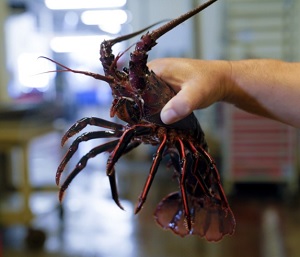
California Lobster season debuts amid changing seafood industry
It’s California spiny lobster season, from October through mid-March. Local fishermen and seafood retailers are celebrating its arrival, announcing the happy news that prices are the lowest in many years and the supply plentiful. What’s changed? In recent years, more than 95 percent of these well-loved California crustaceans were shipped to China, leaving only high-priced, limited quantities for local consumption. Rumors circulated that some fishermen were contemplating suspending operations, discouraged by their lost markets. Then, just as quickly, attitudes changed, as reality sank in. “People have to eat. If we don’t fish, what are people going to eat?” >click to read< 09:40
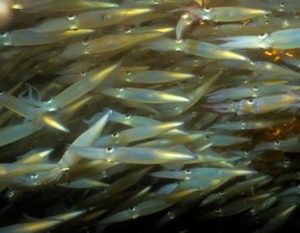
Gary Griggs – Salmon and squid
Salmon and squid both came on the radar this past week,,, These two marine animals have both shared some top billings in their importance to California’s commercial fishery in recent years, although there are significant year-to-year fluctuations. Calamari or market squid have been the number one fishery in tonnage caught, year after year… until last year. In typical years, 70,000 to 118,000 tons (118,000 is the allowable total catch) would be brought to the docks by the squid boats, making up consistently two-thirds of the entire commercial catch. >click to read< 10:46
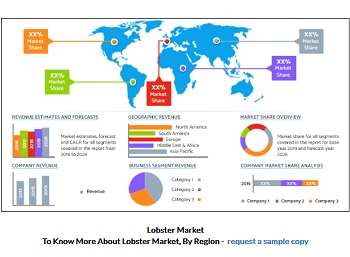
Global Lobster Market Report 2020
The recently published market intelligence report on the Global Lobster Market offers an in-depth analysis of segments and sub-segments in the regional and international Lobster market. The research highlights underlying factors such as the impact of restraints, drivers, and macro indicators on the regional and global Lobster market over the short as well as long period of time. Through a detailed presentation of the data, valuable information of forecast, trends, and dollar values of global Lobster market is offered. The Lobster industry has also suffered a certain impact, but still maintained a relatively optimistic growth,,, >click to read< 17:07
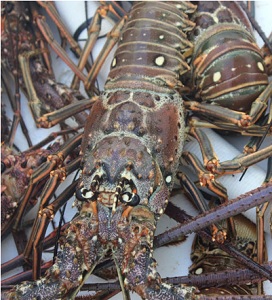
Coronavirus: Florida Keys Spiny Lobster Fishing Industry Hit Hard
Spiny lobster is Florida’s most valuable seafood. But the fishermen in the Keys were already having a lousy year. Then came the coronavirus. “The price crashed $4 in a day,” said George Niles, who fishes out of Stock Island. Bill Kelly from the Florida Keys Commercial Fishermen’s Association said the price went from about $10.50 a pound off the boat to $6. >click to read< 19:22
Most Lobsters Caught In San Diego Wind Up On Chinese Plates
 “Even a lot of people local don’t even really know we have this species of lobsters,” said Apex Wild Seafood owner David Schulken. “Because not that much of it gets sold here.” The price of a locally-caught spiny lobster is much higher than a Maine lobster imported from the East Coast. “Retail price for spiny’s is around $30 a pound,” Schulken said. “And retail for Maine lobster somewhere between $12 and $15 a pound.” Video>click to read<13:15
“Even a lot of people local don’t even really know we have this species of lobsters,” said Apex Wild Seafood owner David Schulken. “Because not that much of it gets sold here.” The price of a locally-caught spiny lobster is much higher than a Maine lobster imported from the East Coast. “Retail price for spiny’s is around $30 a pound,” Schulken said. “And retail for Maine lobster somewhere between $12 and $15 a pound.” Video>click to read<13:15
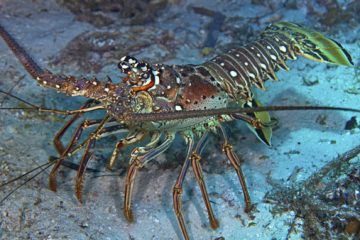
The Business of Lobster
With one of the fastest growing economies, and an exploding middle class that extends onto the mainland, the Chinese have developed a taste for the better things in life – and Florida lobster is surely one of them. For the lobster, this was the culmination of a 9,000 mile journey – a journey that in recent years has transformed the commercial fishing industry in Florida. Before the Chinese started buying their lobsters, the fishermen of the Florida Keys were getting just $3 a pound for their catch. Boat captains from Key West to Miami were struggling to survive. >click to read< 12:24
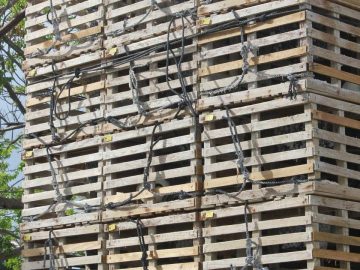
Keys lobstermen catch a break, traps get a $1 per-trap tag waiver
In the wake of Hurricane Irma, every dollar saved helps, say Florida Keys commercial fishermen. Untold thousands of spiny-lobster traps, the primary gear in the most economically significant Keys seafood harvest, disappeared or were destroyed by the Category 4 storm in September. The statewide lobster industry based in the Keys will get a bit of a break in the 2018 season that opens in August. The Florida Fish and Wildlife Conservation Commission at its December meeting agreed to waive for one season the annual $1 per-trap tag fee for the allowed 473,500 traps in the lobster fishery. >click here to read< 13:44
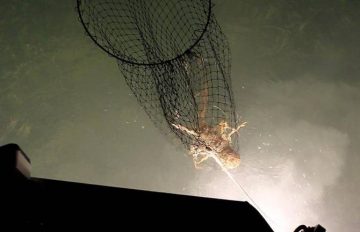
Florida: Fishery agency floats commercial bullynet plan
Since Florida has created new rules on commercial harvest of spiny lobster by bullynetters, a federal marine fishery agency wants to hear thoughts on extending the gear regulations beyond state waters. Staff with the South Atlantic Fishery Management Council will hold online webinars Monday and Tuesday to outline a draft proposal to federal rules that could resolve “inconsistencies between state of Florida spiny-lobster regulations and those in federal waters off the coast of Florida….”click here to read the story 09:41
AB 944 – Local lawmaker helps create Spiny Lobster Commission
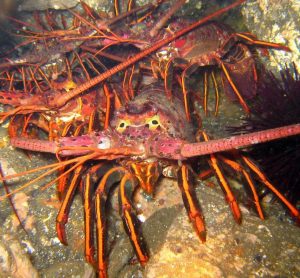 Assemblymember Monique Limón has helped create a Spiny Lobster Commission to support the local fishing industry. Governor Jerry Brown has signed the bill, Limón announced Friday. She authored the bill and says it will aid local spiny lobster fisheries. This is really an effort of the fishers, businesses and conservation groups coming together to proactively solve problems,” said Assemblymember Limón. “With AB 944, the Spiny Lobster Commission will be able to carry out programs of education, marketing and research to promote our local product, and to do so in a way that is sustainable.” click here to read the story 11:53
Assemblymember Monique Limón has helped create a Spiny Lobster Commission to support the local fishing industry. Governor Jerry Brown has signed the bill, Limón announced Friday. She authored the bill and says it will aid local spiny lobster fisheries. This is really an effort of the fishers, businesses and conservation groups coming together to proactively solve problems,” said Assemblymember Limón. “With AB 944, the Spiny Lobster Commission will be able to carry out programs of education, marketing and research to promote our local product, and to do so in a way that is sustainable.” click here to read the story 11:53
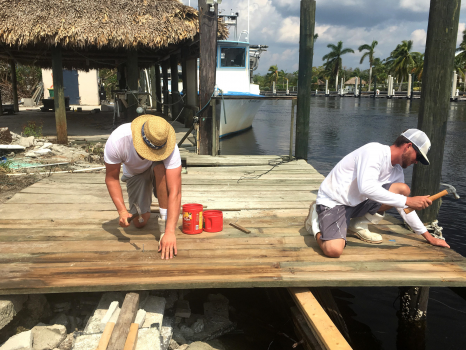
Florida Fishermen Pin Their Hopes On Stone Crab Season after Hurricane Irma
On Florida’s Marathon Key, lobster boats pull up to the docks in the afternoon, same as they would on any September day. But this year, instead of hauling in thousands of valuable spiny lobsters, most are unloading the few traps they can find, and maybe a quarter of the usual catch. Boat captain Carlos Moreira is tired after a long day at sea searching for lost traps. “Well you gotta start somewhere, so you just look for one,” says Moreira. “Yesterday, from where I had my traps to where I found them, they were 7 miles away. And to travel around, and try to find a 7 and a half inch buoy in the Gulf of Mexico, is a challenge.” click here to read the story 08:16
A double whammy at trap yard – First, a fire, then a hurricane. What can possibly come next? “A lot of guys lost a lot of gear again. They rebuilt all the traps lost in the fire, so all those traps were lost for a second time,” click here to read the story
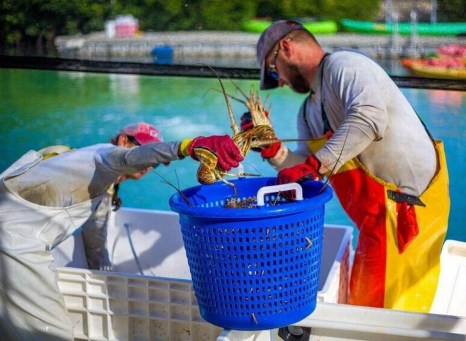
Hurricane Irma: “The fishing industry in the Keys is frozen, paralyzed. We’re literally in a state of shock,”
Marooned on no-name sandbars among the mangroves in the Florida Keys are acres of broken lobster traps and the crumbled livelihoods of Florida fishermen. More than two weeks after Hurricane Irma, the Keys’ $150 million commercial fishing and trapping industry is at a standstill. And the result could affect every link in the chain, from the fisherman to the restaurant and grocery store consumer. If you find Florida spiny lobster at your local market, it will undoubtedly be frozen. “The fishing industry in the Keys is frozen, paralyzed. We’re literally in a state of shock,”, click here to read the story 07:37
Trap fishermen, industry suffers record loses from Irma
 Conch Key commercial fisherman Gary Nichols scoured the Atlantic Ocean for seven hours on Monday and only found 15 of his 5,000 spiny lobster traps. Fellow Conch Key fishermen Jeff Kramer was only able to locate a handful of his 2,000 traps he had placed in the Atlantic. Both are hoping that ones in the Gulf of Mexico fared better. Nichols’ daughter Kelly Cordova Nichols was able to locate 160 of the family’s 1,500 traps in the bay. Nichols and his daughter are also working with two boats that were damaged by Hurricane Irma and are “not properly operating.” “I feel a little bit defeated,” Nichols said. “It’s hard to keep focused and have a firm belief in God and happiness right now. click here to read the story 16:05
Conch Key commercial fisherman Gary Nichols scoured the Atlantic Ocean for seven hours on Monday and only found 15 of his 5,000 spiny lobster traps. Fellow Conch Key fishermen Jeff Kramer was only able to locate a handful of his 2,000 traps he had placed in the Atlantic. Both are hoping that ones in the Gulf of Mexico fared better. Nichols’ daughter Kelly Cordova Nichols was able to locate 160 of the family’s 1,500 traps in the bay. Nichols and his daughter are also working with two boats that were damaged by Hurricane Irma and are “not properly operating.” “I feel a little bit defeated,” Nichols said. “It’s hard to keep focused and have a firm belief in God and happiness right now. click here to read the story 16:05
South Atlantic Fishery Management Council may hike overall lobster harvest
 Federal fishery managers meeting this week in Georgia hear proposals to raise the annual limit on spiny lobster harvests, the Florida Keys’ most economically important commercial species. The South Atlantic Fishery Management Council meets from Monday through Friday at the Westin resort in Jekyll Island, Ga. Permit limits in the for-hire (charter) sector in the snapper-grouper fishery also are up for discussion. The council is considering raising the annual catch numbers of spiny lobster because fishers contend that the number were based on yearly averages that include some of the worst lobster seasons on record. Twice in recent years, the harvests have exceeded the current catch limit of 7.3 million pounds. A legal sized spiny lobster weighs about 1 pound. During the bad seasons, “the historic low level of landings that were documented for the species [suggested] biological conditions had changed and that spiny lobster populations were at a new low normal,” says council staff summary. “Since landings have been much higher than anticipated, the review panel… determined that conditions for spiny lobster are likely better than they were during the 10-year period of low landings.” continue reading the story here 14:19
Federal fishery managers meeting this week in Georgia hear proposals to raise the annual limit on spiny lobster harvests, the Florida Keys’ most economically important commercial species. The South Atlantic Fishery Management Council meets from Monday through Friday at the Westin resort in Jekyll Island, Ga. Permit limits in the for-hire (charter) sector in the snapper-grouper fishery also are up for discussion. The council is considering raising the annual catch numbers of spiny lobster because fishers contend that the number were based on yearly averages that include some of the worst lobster seasons on record. Twice in recent years, the harvests have exceeded the current catch limit of 7.3 million pounds. A legal sized spiny lobster weighs about 1 pound. During the bad seasons, “the historic low level of landings that were documented for the species [suggested] biological conditions had changed and that spiny lobster populations were at a new low normal,” says council staff summary. “Since landings have been much higher than anticipated, the review panel… determined that conditions for spiny lobster are likely better than they were during the 10-year period of low landings.” continue reading the story here 14:19
Spiny Lobster season in the Florida Keys: Not as strong, not a disaster
 One month remains in the regular lobster season but many of the traps put out by the Florida Keys commercial fleet are back on the hill — meaning pulled ashore until next summer. “We’re bringing in about 235 traps now from 200 feet of water,” Conch Key commercial fisherman Gary Nichols said Tuesday. “This season has been kind of fairly good,” Nichols reported from aboard his 43-foot boat. “It’s not as good as the last couple of years and the market has been softer.” Tom Hill at Key Largo Fisheries agreed, “It hasn’t been a bad year, but it’s not as robust as it has been. I think we have had less production than in the past few seasons.”,, The Asian market for live Florida lobster, which buoyed the fleet after the economic recession, remains a critical component of the fishing economy but was not as profitable as in the past seven to eight years. continue reading the story here 10:17
One month remains in the regular lobster season but many of the traps put out by the Florida Keys commercial fleet are back on the hill — meaning pulled ashore until next summer. “We’re bringing in about 235 traps now from 200 feet of water,” Conch Key commercial fisherman Gary Nichols said Tuesday. “This season has been kind of fairly good,” Nichols reported from aboard his 43-foot boat. “It’s not as good as the last couple of years and the market has been softer.” Tom Hill at Key Largo Fisheries agreed, “It hasn’t been a bad year, but it’s not as robust as it has been. I think we have had less production than in the past few seasons.”,, The Asian market for live Florida lobster, which buoyed the fleet after the economic recession, remains a critical component of the fishing economy but was not as profitable as in the past seven to eight years. continue reading the story here 10:17
New rules for commercial spiny lobster bully-netting get final vote
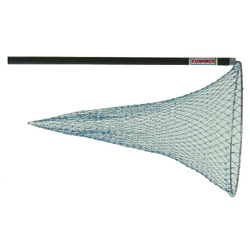 If given final approval by the Florida Fish and Wildlife Conservation Commission, bully-netting would become a more regulated sector within the state season on spiny lobster but would remain open to new commercial fishers. The bully-netting issue now is included on the consent agenda for the FWC’s Feb. 8 and 9 meeting in Crystal River, following preliminary approval at a November meeting.The eight-month lobster season runs Aug. 6 through March 31. No new permits, if approved, would be issued for the season now under way. “Bully-netting would stay open-access, meaning it’s not limited just to people doing it now,” said Amanda Nalley, spokeswoman for FWC’s Marine Fisheries office. The night-fishing technique, using a spotlight and long-handled net to catch lobster on the bottom, “has a history of allowing people to enter the fishery at a low cost, and the commission wants to keep that,” Read the story here 11:11
If given final approval by the Florida Fish and Wildlife Conservation Commission, bully-netting would become a more regulated sector within the state season on spiny lobster but would remain open to new commercial fishers. The bully-netting issue now is included on the consent agenda for the FWC’s Feb. 8 and 9 meeting in Crystal River, following preliminary approval at a November meeting.The eight-month lobster season runs Aug. 6 through March 31. No new permits, if approved, would be issued for the season now under way. “Bully-netting would stay open-access, meaning it’s not limited just to people doing it now,” said Amanda Nalley, spokeswoman for FWC’s Marine Fisheries office. The night-fishing technique, using a spotlight and long-handled net to catch lobster on the bottom, “has a history of allowing people to enter the fishery at a low cost, and the commission wants to keep that,” Read the story here 11:11
Seminar in Marathon Fla. looks at spiny lobster research
 Some top experts on spiny lobster will meet Wednesday in Marathon to discuss the latest research on the crustacean, which is the top-grossing marine species in the Florida Keys generating $70 million a year to the local economy. The Keys waters account for nearly 90 percent of the spiny lobster harvest in the United States. A robust Asian market and a steady catch has made spiny lobster fishery the most lucrative in the Keys. Florida Fish and Wildlife Conservation Commission is hosting the all-day seminar Wednesday as a way to put out the latest research on spiny lobster to the local commercial fishermen and to the public, FWC lobster biologist Tom Matthews said. Bill Kelly, the executive director of the Florida Keys Commercial Fishermen’s Association, said there is a need for new science on the fishery, as the current science used to make regulations is “outdated and goes back to the 1990s.” Read the story here 11:57
Some top experts on spiny lobster will meet Wednesday in Marathon to discuss the latest research on the crustacean, which is the top-grossing marine species in the Florida Keys generating $70 million a year to the local economy. The Keys waters account for nearly 90 percent of the spiny lobster harvest in the United States. A robust Asian market and a steady catch has made spiny lobster fishery the most lucrative in the Keys. Florida Fish and Wildlife Conservation Commission is hosting the all-day seminar Wednesday as a way to put out the latest research on spiny lobster to the local commercial fishermen and to the public, FWC lobster biologist Tom Matthews said. Bill Kelly, the executive director of the Florida Keys Commercial Fishermen’s Association, said there is a need for new science on the fishery, as the current science used to make regulations is “outdated and goes back to the 1990s.” Read the story here 11:57
Florida Keys Lobster season starts with record harvest, low prices
 The harvest of spiny lobster off the Florida Keys has never been better, but the price fishermen are being paid is down significantly so far because the Asian market has yet to take off this season. The season started earlier this month with trap fishermen catching near record number of lobster, fishermen said. A trap will produce about 10 pounds of lobsters on average over the course of an eight-month season, with the bulk being harvested in the first couple of months. Read the rest here 16:38
The harvest of spiny lobster off the Florida Keys has never been better, but the price fishermen are being paid is down significantly so far because the Asian market has yet to take off this season. The season started earlier this month with trap fishermen catching near record number of lobster, fishermen said. A trap will produce about 10 pounds of lobsters on average over the course of an eight-month season, with the bulk being harvested in the first couple of months. Read the rest here 16:38
Spiny lobster season ended March 31with good catch, great prices but looming challenges
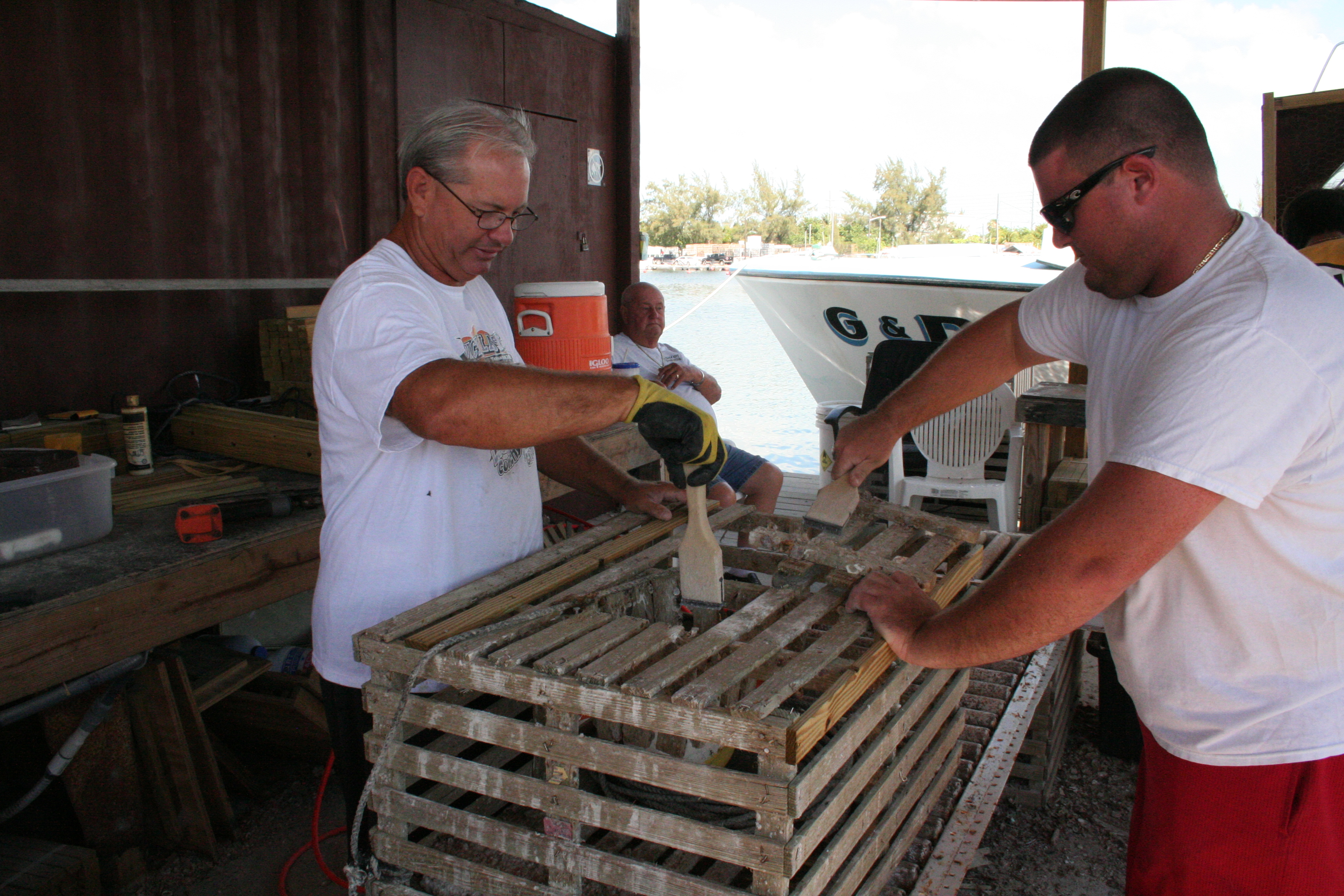 While the fishery itself is in good shape, the largest threat facing the people who make their living on the water comes from the land side. Development pressure, which chased the commercial fishing industry out of Key West to Stock Island decades ago, is now reaching that island as well. The Monroe County Commission is even considering buying some commercial waterfront on Stock Island, to prevent it from being turned into a site for hotels and recreational marinas. Audio, Read the rest here 09:40
While the fishery itself is in good shape, the largest threat facing the people who make their living on the water comes from the land side. Development pressure, which chased the commercial fishing industry out of Key West to Stock Island decades ago, is now reaching that island as well. The Monroe County Commission is even considering buying some commercial waterfront on Stock Island, to prevent it from being turned into a site for hotels and recreational marinas. Audio, Read the rest here 09:40
Key West: Lobster traps limits not well received
 The idea of reducing the number of spiny lobster traps as a way to ease fishing pressure on the Florida Keys’ most lucrative commercial fishery did not go over well at a meeting of state federal fishery managers Monday in Key West. The group discussed three possible actions: closing the season early; embarking on a more aggressive trap reduction program; and exempting the spiny lobster fishery from annual quotas. The proposal that received the most vocal opposition was more aggressively reducing the number of traps. Read the rest here 08:09
The idea of reducing the number of spiny lobster traps as a way to ease fishing pressure on the Florida Keys’ most lucrative commercial fishery did not go over well at a meeting of state federal fishery managers Monday in Key West. The group discussed three possible actions: closing the season early; embarking on a more aggressive trap reduction program; and exempting the spiny lobster fishery from annual quotas. The proposal that received the most vocal opposition was more aggressively reducing the number of traps. Read the rest here 08:09
Florida lobsters find a market in China
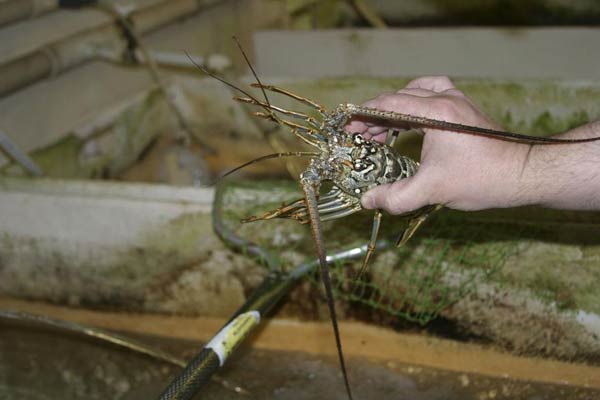 The US lobster trade with China is growing rapidly, especially for a species called the spiny lobster that is harvested in the Florida Keys. “The Chinese prefer the spiny lobster over its better known brethren the North American or Maine lobster. Part of the reason is cultural – the Chinese think of a spiny lobster as similar to a dragon prawn and the dragon is a very powerful symbol in China.” Read the rest here 21:56
The US lobster trade with China is growing rapidly, especially for a species called the spiny lobster that is harvested in the Florida Keys. “The Chinese prefer the spiny lobster over its better known brethren the North American or Maine lobster. Part of the reason is cultural – the Chinese think of a spiny lobster as similar to a dragon prawn and the dragon is a very powerful symbol in China.” Read the rest here 21:56
Florida Law imposing stiffer penalties for lobster violators goes to governor
 Lobster violations have generally been treated as second-degree misdemeanors punishable by up to 60 days in jail and a $500 fine. Under the revised law, possession of any out-of-season lobster or wrung tails, or violations involving more than 25 lobster, would be considered a first-degree misdemeanor. A first-degree misdemeanor could result in a 12-month jail sentence and $1,000 fine. Loss of recreational or commercial fishing licenses also could result. Read more here 08:22
Lobster violations have generally been treated as second-degree misdemeanors punishable by up to 60 days in jail and a $500 fine. Under the revised law, possession of any out-of-season lobster or wrung tails, or violations involving more than 25 lobster, would be considered a first-degree misdemeanor. A first-degree misdemeanor could result in a 12-month jail sentence and $1,000 fine. Loss of recreational or commercial fishing licenses also could result. Read more here 08:22






